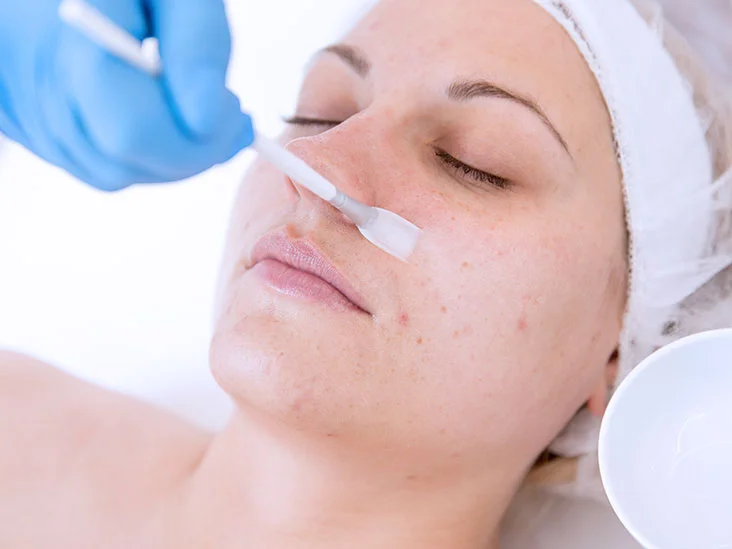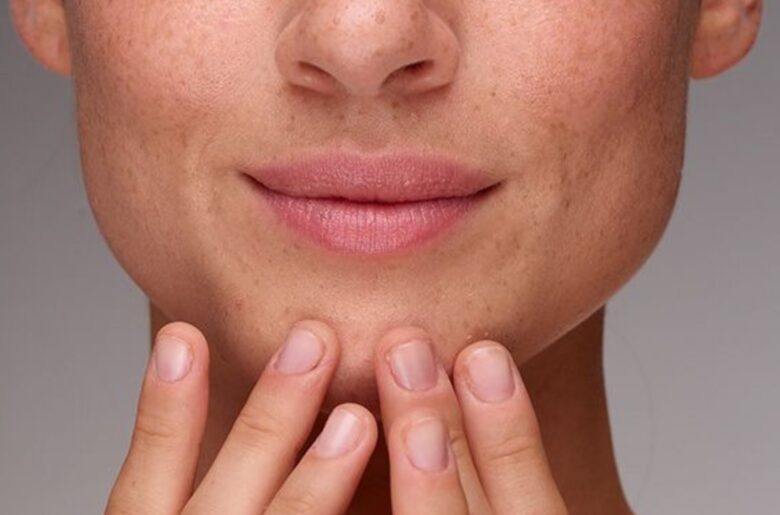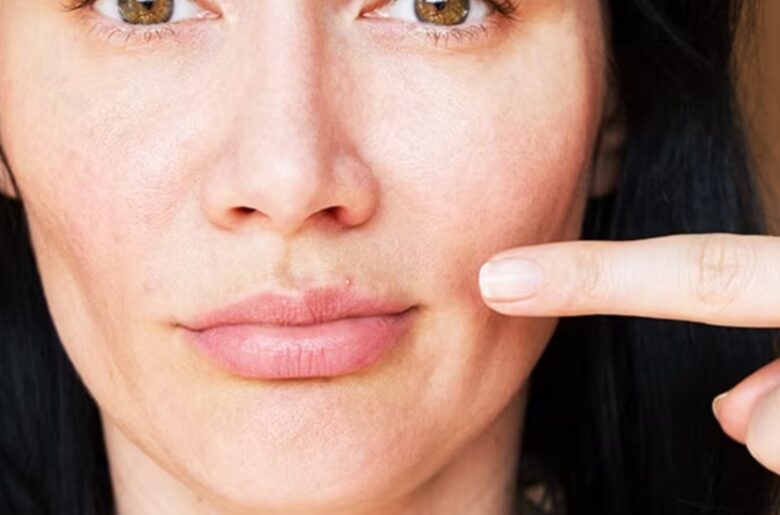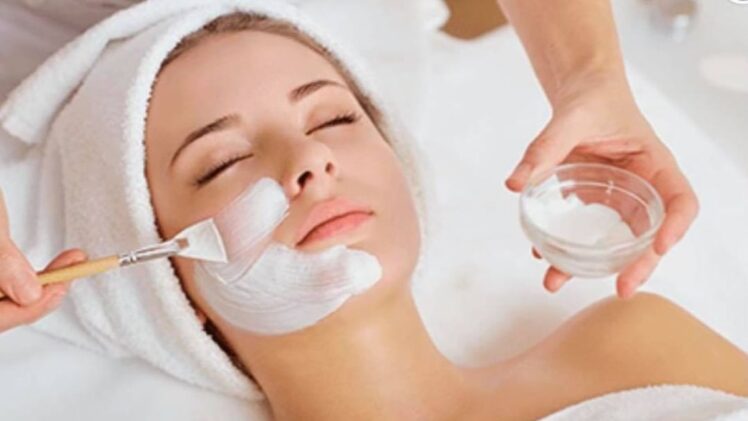Chemical peels are some of the most potent skin treatments available on the market, using acids and adjacent chemical compounds to address many skin concerns.
Selecting the ideal chemical peel variety hinges upon individualized skin concerns, inherent skin classification, and aspirational outcomes.
This article aims to provide insight into the various types of chemical peels and how to choose the right one for your skin type.

Source: laser-aesthetic-center.com
Contents
What is a chemical peel?
Chemical peels, a cosmetic treatment, use acids to gently exfoliate the skin. These acids work to uniformly eliminate damaged skin cells over the treated area.
When administered properly, this process facilitates skin healing with minimal potential for scarring or alterations in skin tone.
Chemical peels have the capacity to influence two distinct layers of the skin: the outer layer, known as the epidermis, and the underlying dermis. The epidermis is the visible surface, while the dermis resides just below it, housing nerve endings, sweat glands, and hair follicles.
In every instance of chemical peels, there is a controlled removal of skin cells from the epidermis. A small fraction of the dermis may also be addressed in more potent peels.
Understanding the different types of chemical peels
Chemical peels, in essence, are cosmetic treatments that involve the administration of chemical solutions onto the skin, aiming to foster exfoliation and enhance attributes related to texture, tone, and overall appearance.
Chemical Peels can be classified into three core categories based on the extent of penetration and the precise skin-related concerns they target namely superficial, medium, and deep peels.
-
Superficial Peels:

Source: virginiafacialplasticsurgery.com
This variant is the gentlest within the chemical peel spectrum, strategically tailored for addressing minor skin-related concerns such as lackluster appearance, uneven consistency, and subtle pigmentation inconsistencies.
These are primarily performed through the application of alpha hydroxy acids (AHAs), exemplified by glycolic acid or beta hydroxy acids (BHAs), typified by salicylic acid.
Superficial peels restrict their impact on the uppermost skin layer (epidermis), thereby expediting recuperation periods.
-
Medium Peels:
Medium-level peels undertake deeper skin penetration to efficaciously target substantial concerns such as moderate wrinkling, sun damage, and deviations in skin pigmentation.
Techniques predominantly involve trichloroacetic acid (TCA) or an amalgamation of diverse acids, facilitating mid-level skin strata (dermis) access.
In contrast to superficial peels, medium peels necessitate prolonged intervals for recovery, often characterized by the potential redness and peeling of skin extending over roughly one or more weeks.
-
Deep Peels:

Source: medicalnewstoday.com
The deep peel category is characterized by its fierce intensity, harnessing potent acids, predominantly phenol, to actively combat acute skin-related issues encompassing pronounced wrinkles, extensive photodamage, and even specific pre-cancerous formations.
Deep peels permeate the subcutaneous skin layers, inciting significant skin rejuvenation processes. This efficacy can come at the cost of extended recovery durations, frequently involving manifestations like swelling, erythema, and multiple weeks of obligatory downtime.
Irrespective of the chosen chemical peel, meticulous adherence to post-treatment directions and vigilant safeguarding against sun exposure are crucial for attaining optimal outcomes and curbing potential risks.
Assessing your skin type
Assessing your skin type is crucial before considering chemical peels, as it helps determine the most appropriate treatment and reduces the risk of adverse reactions. Skin type classification typically falls into five main categories: normal, dry, oily, combination, and sensitive.
-
Normal Skin:

Source: cerave.com
This classification represents equilibrium within the skin, showcasing smooth texture, uniform tone, minimal flaws, and just the right amount of oil secretion. Chemical peels tailored for normal skin can effectively tackle minor concerns while augmenting overall complexion.
-
Dry Skin:
Dry skin often experiences tautness and may exhibit flakiness, scaling, or coarseness. Delicate chemical peels enriched with moisturizing constituents can effectively eliminate dead skin cells while amplifying moisture retention.
-
Oily Skin:

Source: medicalnewstoday.com
Skin characterized by oil surplus, yielding expanded pores and a greasy appearance, falls under the oily category. Chemical peels incorporating salicylic acid or glycolic acid prove instrumental in regulating oiliness and diminishing pore dimensions.
-
Combination Skin:
This skin variant manifests amalgamated attributes, with certain regions, often the T-zone, exhibiting oiliness while others sway toward normalcy or dryness. Adroit evaluation is warranted to effectively address both oily and parched areas.
-
Sensitive Skin:

Source: bebeautiful.in
Sensitivity-prone skin is predisposed to irritation, redness, and allergic manifestations. Individuals with sensitive skin are better served by milder chemical peels infused with alleviating elements like chamomile or lactic acid, thereby circumventing undue irritation.
Prior to embarking upon a chemical peel journey, it is advisable to seek the help of a dermatologist or authorized skincare practitioner.
This professional assessment delves into an all-encompassing analysis of your skin category, its specific requisites, and any prevailing skin anomalies.
Such an appraisal serves as the bedrock for judiciously selecting the appropriate chemical peel, the optimal concentration of active components, and the most advantageous treatment protocol.
Consulting a skincare professional
Getting advice from a skincare pro is a big help in choosing the right chemical peel for your skin. While knowing your skin type matters, a pro adds extra smarts to the decision. A good skincare expert really knows the different peels.
They don’t just look at your skin type. They think about your medical history, what you do for your skin, and what you might be sensitive to. This full check makes sure you get the best and safest treatment.
They also look deeper than just the surface of your skin. They can see problems like sun damage, scaling, fine lines, and weird color spots that you might not notice.
This helps them pick the right strength of peel to fix those issues. Talking to a skincare pro is also your chance to share your skin goals.
They can be honest about what’s possible and how many treatments you’ll need. This keeps you from being disappointed and helps you make the best choices. Sometimes, they suggest using other treatments with peels, like lasers or tiny skin scrubs.
Conclusion

Source: indiatvnews.com
When executed under the guidance of a skincare expert, a chemical peel can provide you with an effective and long-lasting solution to a host of skincare concerns.
However, it is important to understand your skin type and what exact types of peels you’ll get the most out of before you get started on this journey to better skin health.
